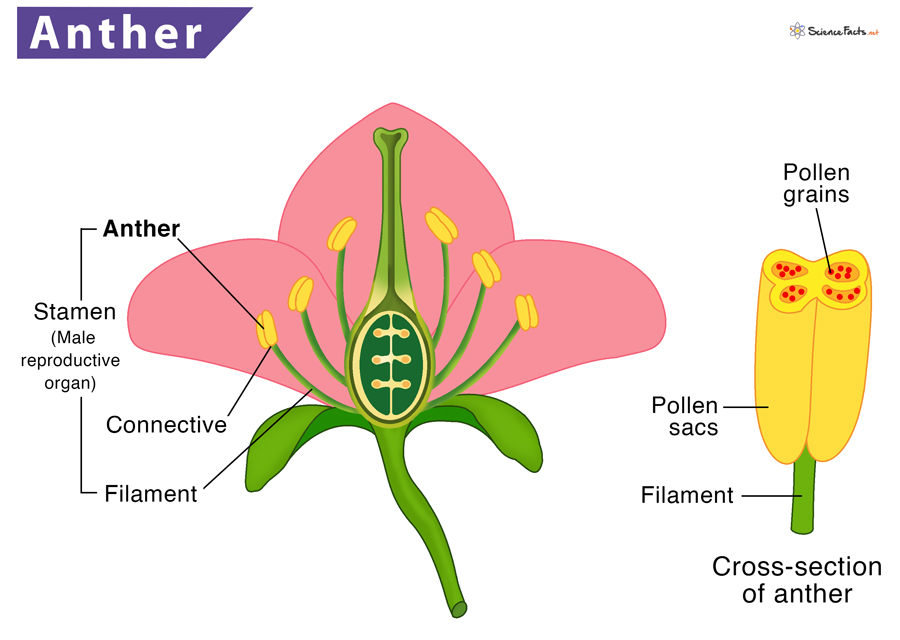Anther
What is Anther
The anther is a part of the male reproductive organ of a flowering plant, the stamen. It is a bilobed, pouch-like structure, sitting at the tip of stamen filament. Anther produces and stores pollen grains inside it.
Structure
Anthers are made up of two cup-like structures called thecae, which remain attached to the slender filament through connective tissue.
Each theca contains two microsporangia or pollen sacs, which fuse to form a chamber called locule. Pollen grains are produced inside these pollen sacs.
Most of the flowers are dithecal, having two thecae and four microsporangia. However, few plants, mainly those belonging to the families Cannaceae (canna-lily) and Malvaceae (mallow), are monothecal, having a single theca and two microsporangia.
Pollen Development
The microsporangia of anther contain microspore mother cells, surrounded by a tissue layer, called the tapetum. While the anther develops, the microspore mother cells undergo meiosis, which divides the mother cell into four haploid microspores. The haploid microspores undergo mitotic division to form a mature pollen grain.
Anther Attachment
Anthers get attached to filaments in different ways.
- Basifixed: The base of the anthers connects to the apex of the filament. Example – cassia, mustard.
- Adnate: The long filament runs throughout the length of the anther. Example – water lily, magnolia.
- Dorsified: The filament gets connected to the dorsal side of the anther. Example: passiflora, citrus.
All these types of anther attachment can be either versatile or fixed. Versatile attachments mean that the anther can swing freely over the filament when touched by a pollinator, with passing breeze or water flow. These anthers may facilitate the transfer of pollen more efficiently. Grasses and eucalyptus have versatile anther attachment.
Function
The primary function of the anther is to produce, store and disperse pollen.
-
References
Article was last reviewed on Friday, December 24, 2021




